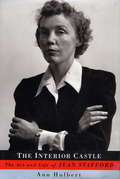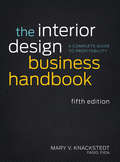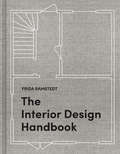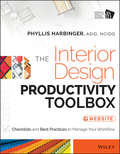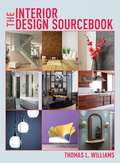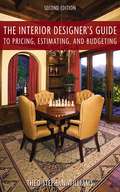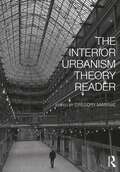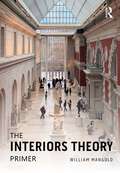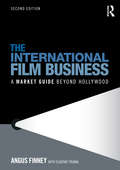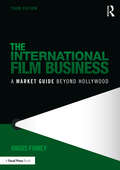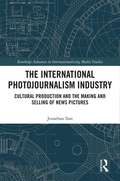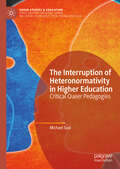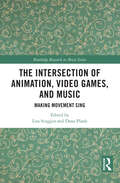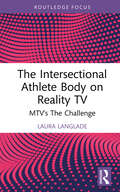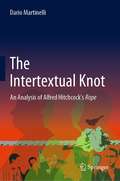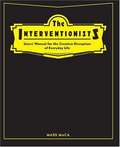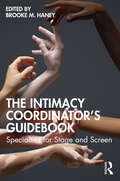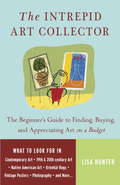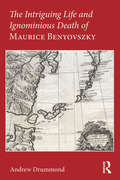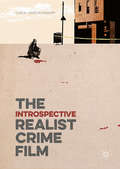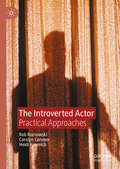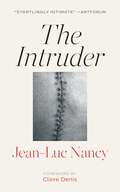- Table View
- List View
The Interior Castle
by Ann HulbertAn important moment in American literary history takes life in this stunning biography of Jean Stafford, one of the most successful, admired--and troubled--of the brilliant and influential midcentury circle of writers and critics that included Allen Tate, Caroline Gordon, Peter Taylor, Delmore Schwartz, Randall Jarrell, and Robert Lowell, Stafford's first husband. Ann Hulbert shows us how Stafford, raised in Colorado, the daughter of a failed writer of Westerns, came of literary age in the East, yet fiercely maintained her connection with her provincial background, forging the unique style that marked her highly acclaimed first novel, Boston Adventure; her Masterpiece, The Mountain Lion; her third novel, The Catherine Wheel; and the stories she published in The New Yorker and elsewhere, which were honored in 1970 with a Pulitzer Prize. We follow Stafford through the early experiences to which she returned again and again in her fiction, and which helped shape her disenchanted vision--her father's sudden loss of his fortune; her shame as an adolescent, living in a boardinghouse in Boulder run by her mother; her aesthetic experimentation as a member of the intellectually maverick "Barbarians" at the University of Colorado; her exciting but troubling Wanderjahr in Nazi Germany, where she watched civilization crumbling. We see her take her place as a forceful, attractive, witty, yet also insecure woman among a group of spirited young writers who were learning from and challenging their older mentors--the increasingly powerful Southern critics and the Partisan Review circle in New York. With her marriage to Lowell at twenty-four, she embarked on a feverishly creative but ill-fated coursethat held auguries of his and his fellow poets' tragic paths: she struggled with Catholicism, confronted domestic violence, battled with alcoholism and mental instability, and throughout it all wrote formally impeccable fiction. And we see her as she finds some happiness with her third husband, the writer A. J. Liebling, part of the New Yorker world that had become her home in the late 1940s. Throughout, we are made aware of Stafford's constant search for a bastion of order--a safe place, an escape from the unsettling sense of vulnerability that engulfed her, an interior castle--from which to approach her life and her art.
The Interior Design Business Handbook: A Complete Guide to Profitability
by Mary V. KnackstedtThousands of interior design professionals have come to rely on The Interior Design Business Handbook for comprehensive, accessible coverage of the essential procedures, tools, and techniques necessary to manage a successful interior design business. The Fifth Edition of this essential resource has been revised to address the latest trends and changes in the field, with new and updated material on business size and structure, building a brand, client development, social networking and Internet marketing, finances, purchasing, technology and software programs, and other key areas. Complete with more than 75 sample forms and letters, this Fifth Edition is a one-stop resource for all aspects of establishing and running an interior design business—from choosing a location and managing day-to-day operations to growing a business and putting it up for sale. All of the techniques and procedures in the book are rooted in real-world experience and are used daily in successful design firms throughout the United States. Filled with valuable information for solo practices and small firms as well as larger businesses, this book is an indispensable resource for seasoned professionals as well as interior designers who are at the start of their career.
The Interior Design Handbook: Furnish, Decorate, and Style Your Space
by Frida RamstedtPerfectly necessary for our current times: The new bible of interior design. While we spend more time at home than ever before, learn from the guru who has coached an entire Scandinavian generation in the art of creating a harmonious home.Frida Ramstedt believes in thinking about how we decorate, rather than focusing on what we decorate with. We know more today than ever before about design trends, furniture, and knickknacks, and now Frida familiarizes readers with the basic principles behind interior and styling--what looks good and, most of all, why it looks good.The Interior Design Handbook teaches you general rules of thumb--like what the golden ratio and the golden spiral are, the proper size for a coffee table in relation to your sofa, the optimal height to hang lighting fixtures, and the best ways to use a mood board--complete with helpful illustrations. Use The Interior Design Handbook to achieve a balanced, beautiful home no matter where you live or what your style is.
The Interior Design Handbook: Furnish, Decorate, and Style Your Space
by Frida RamstedtThe new comprehensive bible of interior design, from a home styling guru who has coached an entire Scandinavian generation in the art of creating a harmonious home. Frida Ramstedt believes in thinking about how we decorate, rather than focusing on what we decorate with. We know more today than ever before about design trends, furniture, and knickknacks, and now Frida familiarizes readers with the basic principles behind interior and styling—what looks good and, most of all, why it looks good.The Interior Design Handbook teaches you general rules of thumb—like what the golden ratio and the golden spiral are, the proper size for a coffee table in relation to your sofa, the optimal height to hang lighting fixtures, and the best ways to use a mood board—complete with helpful illustrations. Use The Interior Design Handbook to achieve a balanced, beautiful home no matter where you live or what your style is.
The Interior Design Productivity Toolbox: Checklists and Best Practices to Manage Your Workflow
by Phyllis HarbingerGet organized and streamline your workflow with this A-Z accountability system. Design is only part of an interior designer’s job—you’re also responsible for scheduling client meetings, conducting design surveys, creating drawings and specs, and overseeing installation. Multiply by the number of projects on your plate, and you have a recipe for overwhelming disorganization. The Interior Design Productivity Toolbox helps you juggle multiple projects with ease, with a comprehensive self-management system tailored to the needs of interior designers and decorators. Features include: Detailed checklists that highlight weak spots and warn against common pitfalls Covers residential design, contract design, specifications, and renovations Best practices for meetings, design surveys, drawings, specifications, and renovations Customizable online checklists for tracking every phase of your project Exclusive online budgeting tool for tracking product costs and associated expenses to share with your team and your clients If you need to get organized and get back to work, you need The Interior Design Productivity Toolbox.
The Interior Design Sourcebook
by Thomas L. WilliamsConcrete that is light and translucent, fabric that responds to its environment by lighting up, tiles that can be moved from place to place at will-these are just a few of the updated entries you'll find in The Interior Design Directory. The book is divided into four parts, opening with a section on classic, composite materials including wood and stone, brick, and ceramic, then moving on to building materials that have been refined and updated for home use from glass, concrete, and metal to rubber and tiles. The final section is devoted to sustainable materials and the environmental impact of our choices. Photographs of contemporary interiors and detailed close-ups of each material make this as visually inspiring as it is practical.
The Interior Designer's Guide to Pricing, Estimating, and Budgeting
by Theo Stephen WilliamsThis second edition is updated throughout and includes additional material on time management and numerous interviews with leading designers. Empowered by the step-by-step guidance in this book, interior designers will be able to establish prices and budgets that make their clients happy and their businesses profitable. Written by a designer and veteran expert on pricing, estimating, and budgeting systems, the book provides practical guidelines on how to value the cost of designing commercial or residential interiors, from the designer's creative input to the pricing of decorating products and procedures.The book shows how to determine a profitable and fair hourly rate, balance the client's budget with his or her wishes and needs, negotiate prices with suppliers and contractors, write realistic estimates and clear proposals, manage budgets for projects of all sizes and types, and position the firm's brand in relation to its practices. Interviews with experienced interior designers, case studies, and sidebars highlight professional pitfalls and how to master them, from daily crisis management and self-organization to finding the perfect office manager.
The Interior Urbanism Theory Reader
by Gregory MarinicThe Interior Urbanism Theory Reader expands our understanding of urbanism, interiority, and publicness from a global perspective across time and cultures. From ancient origins to speculative futures, this book explores the rich complexities of interior urbanism as an interstitial socio-spatial condition. Employing an interdisciplinary lens, it examines the intersectional characteristics that define interior urbanism. Fifty chapters investigate the topic in relation to architecture, planning, urban design, interior architecture, interior design, archaeology, engineering, sociology, psychology, and geography. Individual essays reveal the historical, typological, and morphological origins of interior urbanism, as well as its diverse scales, occupancies, and atmospheres. The Interior Urbanism Theory Reader will appeal to scholars, practitioners, students, and enthusiasts of urbanism, architecture, planning, interiors, and the social sciences.
The Interiors Theory Primer
by William MangoldIn a world where life is increasingly defined by the spaces we inhabit, understanding interiors is essential to understanding ourselves. The Interiors Theory Primer maps the intellectual terrain of interior design and spatial experience, introducing readers to key concepts that shape how people occupy interior spaces.Organized into three parts, this book begins with foundational concerns, such as place, identity, materiality, and atmosphere, and then examines the boundaries and expertise of the discipline, before turning to critical and emerging topics like biophilia, virtuality, and social justice. Each chapter presents a focused literature review of a major theme in interiors theory, supported by key design precedents and suggestions for further reading. Drawing on a wide range of scholarship, The Interiors Theory Primer offers a coherent framework for understanding interiors as a distinct, interdisciplinary field deeply embedded in the human condition.Accessible to students, useful to professionals, and provocative for scholars, The Interiors Theory Primer argues that the designed environments in which we live, work, and gather deserve greater attention—not only for their aesthetic and functional qualities but also for their powerful role in shaping contemporary life.
The International Film Business: A Market Guide Beyond Hollywood
by Angus FinneyThe International Film Business examines the independent film sector as a business, and addresses the specific skills and knowledge it demands. It describes both the present state of the industry, the significant digital and social media developments that are continuing to take place, and what changes these might effect. The International Film Business: describes and analyses the present structure of the film industry as a business, with a specific focus on the film value chain discusses and analyses current digital technology and how it potentially may change the structure and opportunities offered by the industry in the future provides information and advice on the different business and management skills and strategies includes case studies on a variety of films including The Guard (2011), The King’s Speech (2010), The Best Exotic Marigold Hotel (2012), Cloverfield (2008), Pobby & Dingan (aka Opal Dream, 2005), Confessions of a Dangerous Mind (2002), The Reckoning (2002)and The Mother (2003), and company case studies on Pixar, Renaissance, Redbus and Zentropa. Further case studies on films that failed to go into production include Neil LaBute’s Vapor and Terry Gilliam’s Good Omens. Taking an entrepreneurial perspective on what future opportunities will be available to prepared and informed students and emerging practitioners, this text includes case studies that take students through the successes and failures of a variety of real film companies and projects and features exclusive interviews with leading practitioners in all sectors of the industry, from production to exhibition.
The International Film Business: A Market Guide Beyond Hollywood
by Angus FinneyExamining the independent film sector as a business on an international scale, author Angus Finney addresses the specific skills and knowledge required to successfully navigate the international film business. Finney describes and analyses the present structure of the film industry as a business, with a specific focus on the film (and entertainment) value chain and takes readers through the status of current digital technology, exploring ways in which this is changing the structure and opportunities offered by the industry in the future. The textbook provides information and advice on the different business and management skills and strategies that students and emerging practitioners will need to effectively engage with the industry in an international context. Case studies of films and TV, including Squid Game (2021), Parasite (2019), Game of Thrones (2011-2019) and The Best Exotic Marigold Hotel (2011), are supplemented by company case studies on Redbus, Renaissance, Pixar, with additional new chapters focusing on Netflix, TikTok and the Metaverse. This third edition of The International Film Business includes up-to-date information on the status of the international film industry during and post COVID-19; expanded content looking at the TV industry and streaming services; new case studies and dedicated sections on the Streaming Wars and the Chinese Film Industry and a new chapter looking at the changes in digital production in the context of the global and territorial film and TV industry. Written for students of Film Business and emerging practitioners, this book will take readers through the successes and failures of a variety of real film companies and projects and features exclusive interviews with leading practitioners in all sectors of the industry, from production to exhibition.
The International Photojournalism Industry: Cultural Production and the Making and Selling of News Pictures (Routledge Advances in Internationalizing Media Studies)
by Jonathan IlanHow are events turned into news pictures that define them for the audience? How do events become commodified into pictures that both capture them and reiterate the values of the agencies that sell them? This book looks at every stage of the production of news photographs as they move to and from the ground and are sold around the world. Based on extensive fieldwork at a leading international news agency that includes participant observation with photographers in the field, at the agency’s local and global picture desks in Israel, Singapore, and the UK, in-depth interviews with pictures professionals, and observations and in-depth interviews at The Guardian’s picture desk in London, the findings in this book point to a wide cultural production infrastructure hidden from – and yet also nurtured and thus very much determined by – the consumer’s eye.
The Interruption of Heteronormativity in Higher Education: Critical Queer Pedagogies (Queer Studies and Education)
by Michael SealThis book examines how heteronormativity in higher education can be interrupted and resisted. Located within the theoretical framework of queer and critical pedagogy and based on extensive empirical research, the author explores the dynamics of heteronormativity and its interruption on professional courses in a range of higher education institutions. Reactions to attempt to interrupt it were nuanced: while strategies of contested engagement, avoidance and retreat were expressed, heterosexualities were largely un-examined and un-articulated. ‘Coming out’ needs to be a pedagogical act, carried out concurrently with the interruptions of other social constructions and binary oppositions. The author calls for co-created and co-held meta-reflexive and liminal spaces that emphasise inter-subjectivity, encounters, and working in the moment. These spaces must de-construct and reconstruct pedagogical power and knowledge to promote collective intersubjective consciousnesses, and widen the vision of the reflective practitioner to that of the pedagogical practitioner. This pioneering book is a call to action to all those concerned with interrupting and problematising presumed binary categories of sexuality within the heterosexual matrix.
The Intersection of Animation, Video Games, and Music: Making Movement Sing (Routledge Research in Music)
by Lisa Scoggin and Dana PlankIn both video games and animated films, worlds are constructed through a combination of animation, which defines what players see on the screen, and music and sound, which provide essential cues to action, emotion, and narrative. This book offers a rich exploration of the intersections between animation, video games, and music and sound, bringing together a range of multidisciplinary lenses. In 14 chapters, the contributors consider similarities and differences in how music and sound structure video games and animation, as well as the animation within video games, and explore core topics of nostalgia, adaptation, gender, and sexuality. Offering fresh insights into the aesthetic interplay of animation, video games, and sound, this volume provides a gateway into new areas of study that will be of interest to scholars and students across musicology, animation studies, game studies, and media studies more broadly.
The Intersectional Athlete Body on Reality TV: MTV’s The Challenge (Routledge Focus on Television Studies)
by Laura LangladeThe Intersectional Athlete Body on Reality TV examines the treatment of women, non-White and queer participants on MTV’s The Challenge, a physical competition lauded as ‘America’s fifth sport’, interrogating the treatment of the intersectional body within the reality TV landscape and the influence of professional sports culture.Positing that participants’ success hinges more on identity than on skill and talent, the author unpacks and cross-examines the misogyny, racism and homophobia ingrained in The Challenge culture, and positions the analysis within the context of the hyperconservative politics of the Trump era. Drawing on freak discourse and sports media, the book positions The Challenge as a rich contextual site to explore the contention intersectional bodies that are subjected to spaces where differences increasingly matter, critically evaluating how MTV navigated differing political views to maintain audience numbers while at the same time claiming to support Black Lives Matter (BLM), #MeToo and LGBTQIA+ rights.This in-depth and intricate study will interest students and researchers working in Reality TV studies, Gender studies and Race and Sexuality studies.
The Intertextual Knot: An Analysis of Alfred Hitchcock’s Rope
by Dario MartinelliThis book is a thorough analysis of Alfred Hitchcock's Rope (1948) and of its multiple connections with the Leopold and Loeb murder case and the adaptation of Patrick Hamilton’s eponymous play. As an all-encompassing portrait of the movie, the book discusses its aesthetics, style, role within cinema history, challenges in production, innovations introduced and of course Hitchcock’s signature features. However, as the analysis unfolds, the film reveals itself as an actual journey through the nightmares and the hopes that characterized the 20th century. Nazism and anti-Nazism, antisemitism, homophobia, democracy and totalitarianism, capital punishment and second chances, human rights, World War II, misogyny, tolerance and discrimination, Supermanism and humanism, artistic freedom and censorship. Subtly, often between the lines, and with Hitchcock's usual dark humor, Rope is nevertheless a much stronger social and political statement than it was ever given credit for. The Intertextual Knot is aimed at a varied readership, including film scholars, historians, philosophers and film enthusiasts.
The Intervals of Cinema
by John Howe Jacques RanciereCinema, like language, can be said to exist as a system of differences. In his latest book, acclaimed philosopher Jacques Rancière looks at cinematic art in comparison to its corollary forms in literature and theatre. From literature, he argues, cinema takes its narrative conventions, while at the same time effacing literature's images and philosophy; and film rejects theatre, while also fulfilling theatre's dream. Built on these contradictions, the cinema is the real, material space in which one is moved by the spectacle of shadows. Thus, for Rancière, film is the perpetually disappointed dream of a language of images.From the Trade Paperback edition.
The Interventionists: Users' Manual For The Creative Disruption Of Everyday Life
by Nato Thompson Joseph Thompson Gregory SholetteArt made to attach to buildings or to be given away? Wearable art for street demonstrations or art that sets up a booth at a trade show? This is the art of the interventionists, who trespass into the everyday world to raise our awareness of injustice and other social problems. These artists don't preach or proselytize; they give us the tools to form our own opinions and create our own political actions. The Interventionists, which accompanies an exhibit at MASS MoCA, serves as a handbook to this new and varied work. It's a user's guide to art that is exciting, provocative, unexpected, inspiring (artistically and politically), and fun. From Michael Rakowitz's inflatable homeless shelter and William Pope.L's "Black Factory" truck with pulverizer, gift shop, and giant inflatable igloo to the Biotic Baking Brigade's political pie-throwing, the art of The Interventionists surveys a growing genre and offers a guide for radical social action.The book classifies the artists according to their choice of tactics: the Nomads, who create mobile projects; Reclaim the Streets, artists who act in public places; Tools for Resistance: Ready to Wear, artists who produce fashion for political action; and the Experimental University, artists whose work engages pedagogy and theory. The accompanying text includes essays by noted scholars putting the work in a broader cultural and social context as well as texts by the artists themselves.
The Intimacy Coordinator's Guidebook: Specialties for Stage and Screen
by Brooke M. HaneyThe Intimacy Coordinator's Guidebook: Specialties for Stage and Screen explores the role of the intimacy choreographer with an in-depth look at specializations that exist within the profession.With contributions by over 30 industry professionals, this book aims to bring awareness to a wide range of needs a project may have and how intimacy professionals use their cultural competency specialists in practice to create the most compelling storytelling. In Part One, the book addresses the scope of practice of an intimacy professional by discussing competency, finding your lens and tangential fields in the industry like fight directors, mental health coordinators and cultural competency specialists. Part Two covers specialties like working with minors, prosthetics, intimacy and disability, staging queer intimacy, working with fat actors, Black American intimacy, dance, working on scenes of trauma, sexual violence and non-consent, and BDSM. Between each chapter is a conversation with an actor, director or producer on their experiences working with an intimacy coordinator. In Part Three, the book looks at what it means to be qualified and intimacy professionals' hopes for the future of the industry.The Intimacy Coordinator's Guidebook is an invaluable resource for directors and producers looking to hire an intimacy professional, as well as in-depth study for those who are training or practicing in the field of intimacy for performance.
The Intimate City: Walking New York
by Michael KimmelmanFrom the New York Times architecture critic, his celebrated walking tours of New York City, now expanded, covering four of the five boroughs and some 540 million years of history, accompanied by some of the people who know it bestAs New York came to a halt with COVID, Michael Kimmelman composed an email to a group of architects, historians, writers, and friends, inviting them to take a walk. Wherever they liked, he wrote—preferably someplace meaningful to them, someplace that illuminated the city and what they loved about it. At first, the goal was distraction. At a scary moment when everything seemed uncertain, walking around New York served as a reminder of all the ways the city was still a rock, joy, and inspiration. What began with a lighthearted trip to explore Broadway&’s shuttered theater district and a stroll along Museum Mile when the museums were closed soon took on a much larger meaning and ambition. These intimate, funny, richly detailed conversations between Kimmelman and his companions became anchors for millions of Times readers during the pandemic. The walks unpacked the essence of urban life and its social fabric—the history, plans, laws, feats of structural engineering, architectural highlights, and everyday realities that make up a place Kimmelman calls &“humanity&’s greatest achievement.&” Filled with stunning photographs documenting the city during the era of COVID, The Intimate City is the ultimate insider&’s guide. The book includes new walks through LGBTQ Greenwich Village, through Forest Hills, Queens, and Mott Haven, in the Bronx. All the walks can be walked, or just be read for pleasure, by know-it-all New Yorkers or anyone else. They take readers back to an age when Times Square was still a beaver pond and Yankee Stadium a salt marsh; across the Brooklyn Bridge, for green tea ice cream in Chinatown, for momos and samosas in Jackson Heights, to explore historic Black churches in Harlem and midcentury Mad Men skyscrapers on Park Avenue. A kaleidoscopic portrait of an enduring metropolis, The Intimate City reveals why New York, despite COVID and a long history of other calamities, continues to inspire and to mean so much to those who call it home and to countless others.
The Intrepid Art Collector
by Lisa HunterReady to upgrade your artwork from framed Monet posters but intimidated by what you see in galleries?In The Intrepid Art Collector, Lisa Hunter shows you how to start a fine art collection without spending a fortune. This accessible, jargon-free resource contains up-to-date information on the most popular original art--everything from photography and posters to African art and animation--including where to find it and how to buy it at a fair price. Easy-to-use checklists help you evaluate original art and steer clear of clever fakes. In addition, Hunter has interviewed top dealers, curators, arts lawyers, and appraisers to bring you the best advice on:* Advantages to buying real art instead of reproductions* Determining if a piece of art is fairly priced* Predicting if an artist's work will go up in value* Techniques for negotiating a price with a dealer* Developing your artistic taste, so you'll know if you'll still love your purchase ten years down the road* How to preserve art in your home* Resources, websites, and magazines that will help you learn more about the market and where to find different types of artFrom the Trade Paperback edition.
The Intriguing Life and Ignominious Death of Maurice Benyovszky
by Andrew DrummondPublished in 1790, Maurice Benyovszky’s posthumous memoir was an instant sensation. A tale of exploration and adventure beginning with his daring escape from a Siberian prison and ending with his coronation as King of Madagascar, it was translated into several languages and adapted for the theatre and opera. This book explores the veracity of this memoir and, more broadly, the challenges faced by the explorers of the age and the brutality of colonisation. The self-styled Hungarian Baron Maurice Auguste Aladar Benyovszky, Counsellor to the Duke of Saxony and Colonel in the service of the Queen of Hungary, was in fact only confirmed to have been an officer in a regiment of the Polish Confederation of Bar. While he did escape from Russian captors and subsequently travel to Japan, Formosa, China and Madagascar, many of his exploits were wildly exaggerated or simply invented. Andrew Drummond reveals an alternative picture of events by looking at statements from Benyovszky’s travelling companions and sceptical officials as well as contemporary documents from the places he claimed to have visited, untangling the truth behind his stories and examining what these stories can nonetheless tell us about the era in which Benyovszky lived. Witty and engagingly written, this book is fascinating reading for anyone interested in eighteenth-century colonial history and the story of early European and Russian explorers.
The Introspective Realist Crime Film
by Luis M. García-MainarThis book explores the formal and thematic conventions of crime film, the contexts in which these have flourished and their links with the social issues of a globalized world. The crime film has traditionally been identified with suspense, a heterogeneous aesthetic and a tacit social mind. However, a good number of the crime films produced since the early 2000s have shifted their focus from action or suspense and towards melodrama in narratives that highlight the social dimension of crime, intensify their realist aesthetics and dwell on subjectivity. With the 1940s wave of Hollywood semi-documentary crime films and 1970s generic revisionism as antecedents, these crime films find inspiration in Hollywood cinema and constitute a transnational trend. With a close look at Steven Soderbergh's Traffic (2000), David Fincher's Zodiac (2007), Jacques Audiard's Un prophète (2009) and Tomas Alfredson's Tinker Tailor Soldier Spy (2011), this book sets out the stylistic and thematic conventions, contexts and cultural significance of a new transnational trend in crime film.
The Introverted Actor: Practical Approaches
by Rob Roznowski Carolyn Conover Heidi KasevichDo you have to be an extrovert to succeed as an actor? This book offers ideas to create inclusive acting environments where the strengths of the introverted actor are as valued as those of their extroverted counterparts. As this book shows, many introverts are innately drawn to the field of acting, but can often feel inferior to their extroverted peers. From the classroom to professional auditions, from rehearsals to networking events, introverted actors tell their stories to help other actors better understand how to leverage their natural gifts, both onstage and off. In addition, The Introverted Actor helps to reimagine professional and pedagogical approaches for both actor educators and directors by offering actionable advice from seasoned psychology experts, professional actors, and award-winning educators.
The Intruder
by Jean-Luc NancyIn 1991, Jean-Luc Nancy's heart gave out. In one of the first such procedures in France, a stranger's heart was grafted into his body. Numerous complications followed, including more surgeries and lymphatic cancer. The procedure and illnesses he endured revealed to him, in a more visceral way than most of us ever experience, the strangeness of bodily existence itself and surviving the stranger within him. During this same period, Europe began closing its borders to those seeking refuge from war and poverty. Alarmed at this trend and drawn to a highly intimate form of strangeness with which he had been living for years, Nancy set out in The Intruder to articulate how intrusion—whether of a body or a border—is not antithetical to one’s identity but constitutive of it. In 2004, Claire Denis adapted The Intruder into a film already hailed among the most important of our century. This edition includes Nancy’s and Denis’s accounts of turning philosophy into film and the text of a shorter collaboration between the two of them. Throughout, Nancy and Denis push us to recognize that to truly welcome strangers means a constant struggle against exoticism, enforced assimilation, and confidence in our own self-identity.
